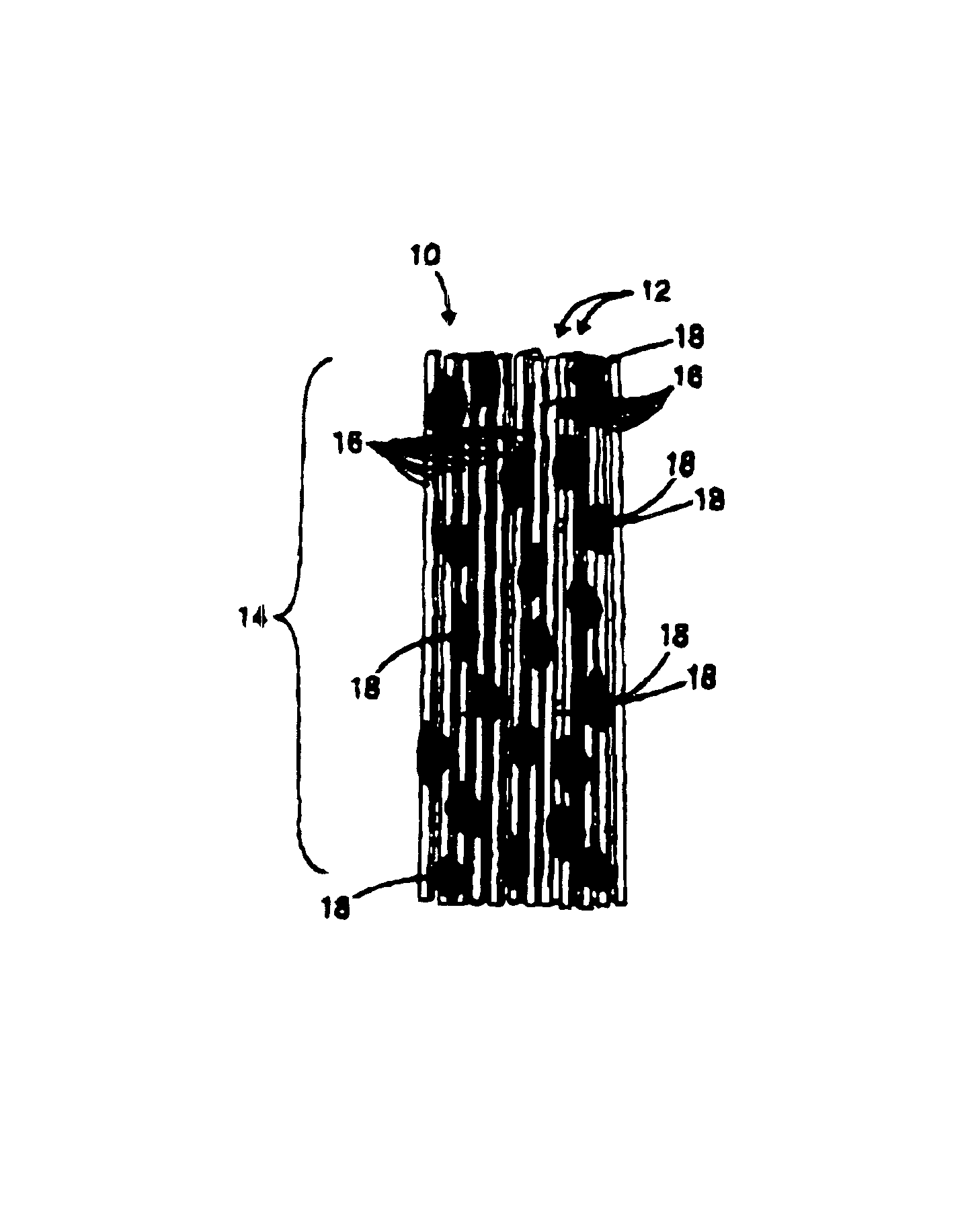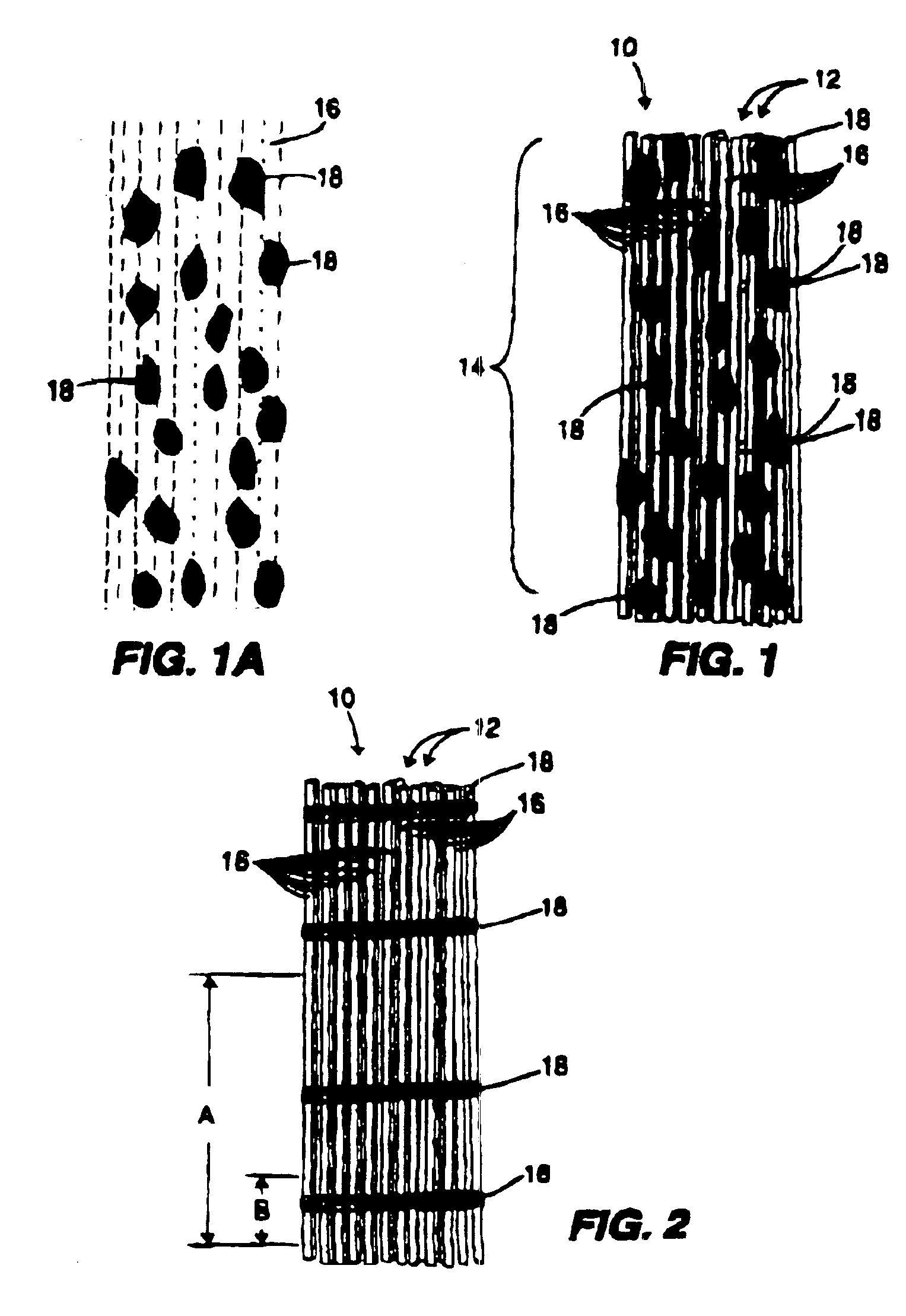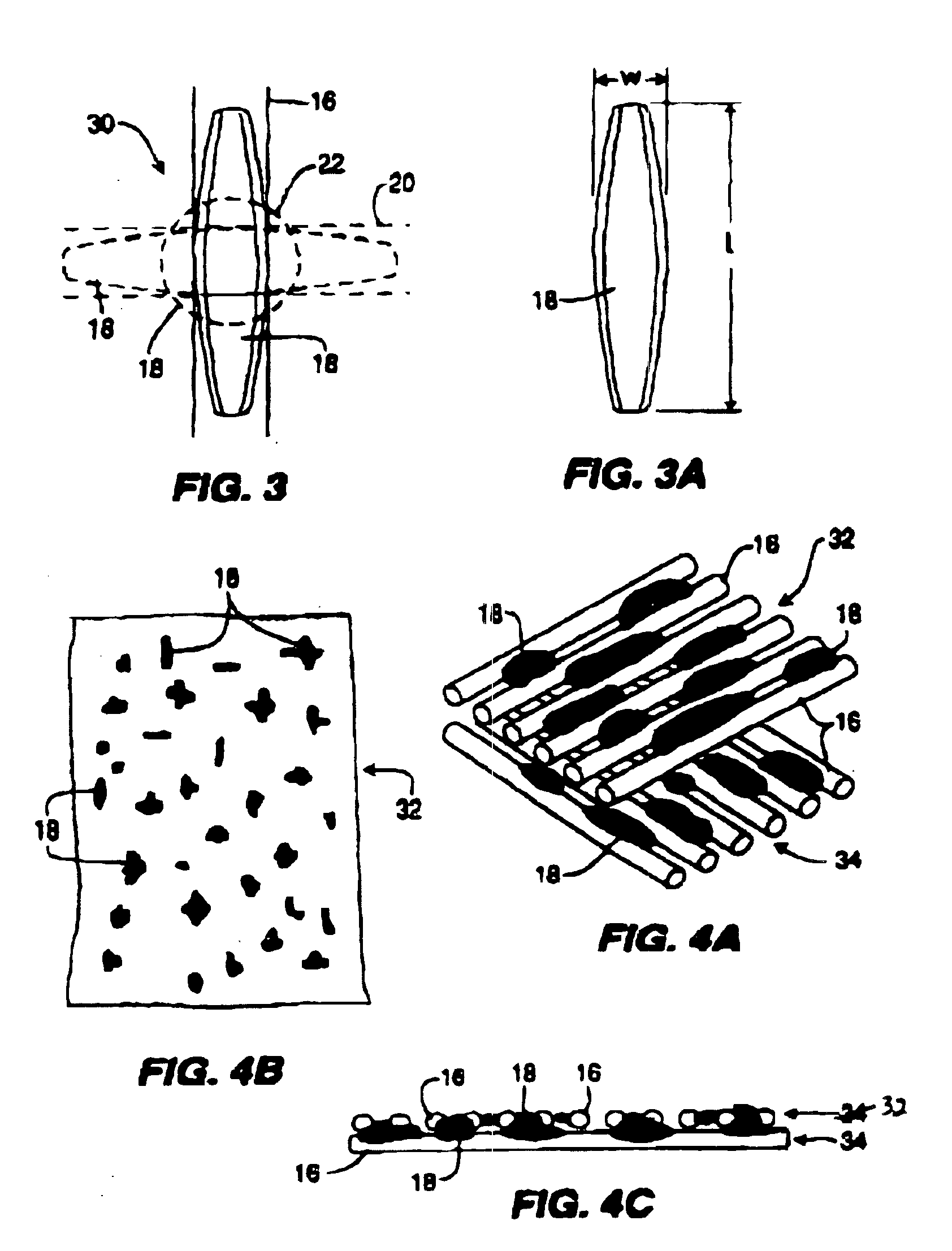Flexible fabric from fibrous web and discontinuous domain matrix
a fiber web and discontinuous domain technology, applied in the field of discontinuous fiber layer systems, can solve the problems of reducing reducing the flexibility of the combined web, and reducing the amount of polymer in the resultant combined web, etc., so as to achieve the effect of improving the volume ratio of fiber to polymer, high flexibility, and ballistic efficiency
- Summary
- Abstract
- Description
- Claims
- Application Information
AI Technical Summary
Benefits of technology
Problems solved by technology
Method used
Image
Examples
example 1
Fibers of Spectra® 1000 (215 denier, 60 filaments per end), commercially available from AlliedSignal Inc. of Petersburg, Va. (40 ends per inch (EPI) and nominal areal density (AD) of 0.00376 gm / cm2), and a matrix resin of Kraton® rubber, type G1650, granular, manufactured by Shell Chemical Co. of Houston, Tex. (particles were passed through a #30, 600 micrometer or 0.0234 inch screen) were used in the experimental procedure listed above. The matrix resin was used with 7.5 wt % (total) scattered over the bottom web before cross-plying. After molding, the matrix resin became spot connecting islands of filaments within the fiber strand, and between fiber strands. The panel was initially paper-like, but resembled flexibility of fabric after crimping and flexing.
example 2
Example 1 was repeated with a matrix resin of 15 wt %. The results were the same as Example 1, however the panel was more robust and more resilient to de-lamination.
example 3
Example 1 was repeated with a matrix resin of 20 wt % and an added ply of polyethylene film, 0.00035 inch (0.000889 cm) thick, manufactured by Raven Industries of Sioux City, S. Dak. was placed on the outside of both fiber webs (Halar® film was removed, and release paper was placed over the PE film prior to pressing). The panel had a robust structure with good flexibility.
PUM
| Property | Measurement | Unit |
|---|---|---|
| size | aaaaa | aaaaa |
| volume ratio | aaaaa | aaaaa |
| size | aaaaa | aaaaa |
Abstract
Description
Claims
Application Information
 Login to View More
Login to View More - R&D
- Intellectual Property
- Life Sciences
- Materials
- Tech Scout
- Unparalleled Data Quality
- Higher Quality Content
- 60% Fewer Hallucinations
Browse by: Latest US Patents, China's latest patents, Technical Efficacy Thesaurus, Application Domain, Technology Topic, Popular Technical Reports.
© 2025 PatSnap. All rights reserved.Legal|Privacy policy|Modern Slavery Act Transparency Statement|Sitemap|About US| Contact US: help@patsnap.com



